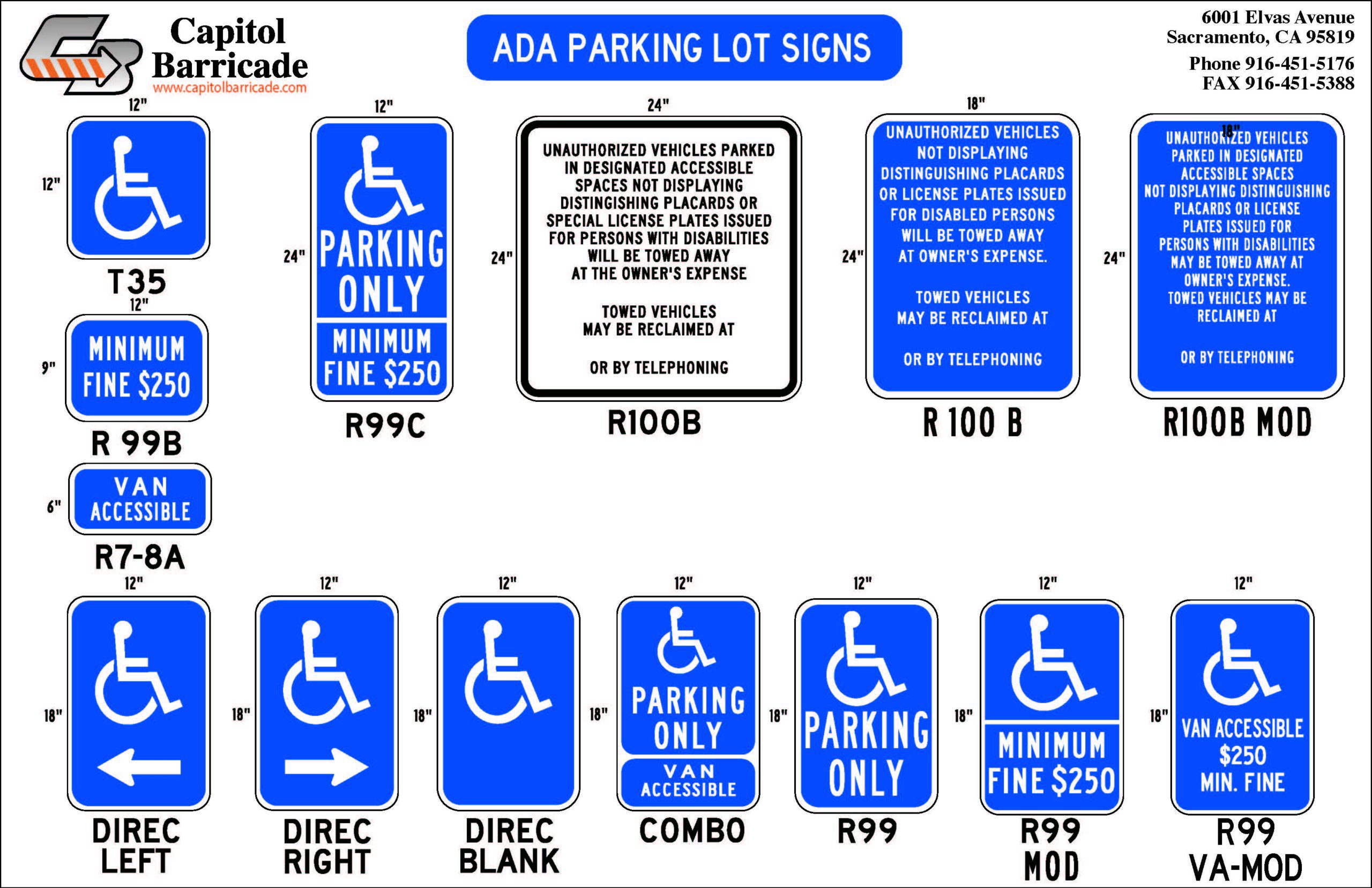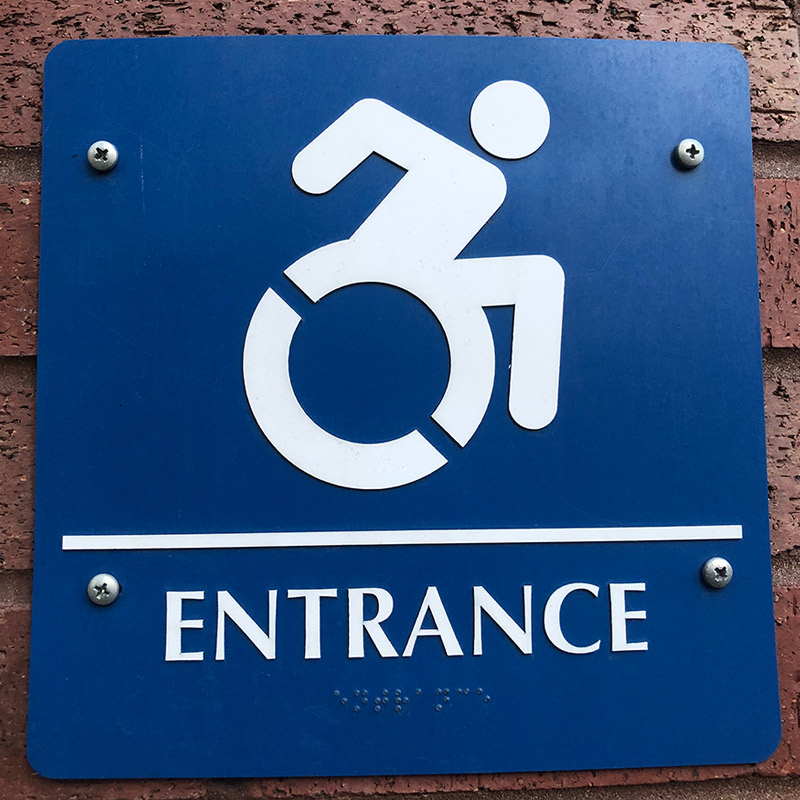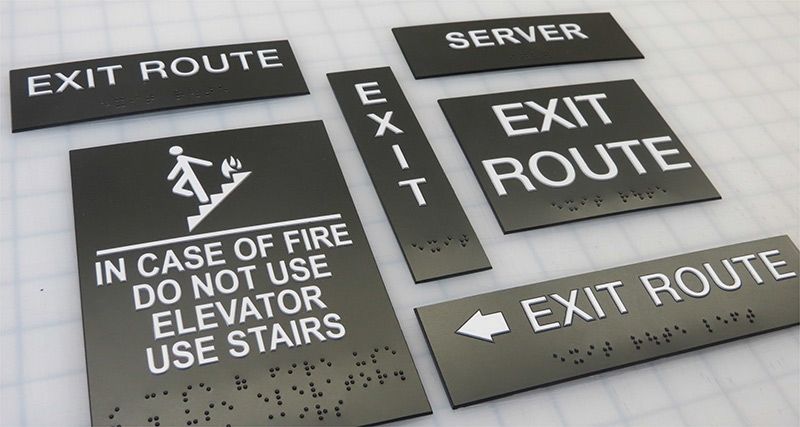The Effect of ADA Signs on Community Availability
The Effect of ADA Signs on Community Availability
Blog Article
Exploring the Key Features of ADA Signs for Enhanced Ease Of Access
In the world of access, ADA indicators serve as silent yet powerful allies, making sure that spaces are inclusive and accessible for individuals with handicaps. By integrating Braille and responsive aspects, these signs break obstacles for the aesthetically damaged, while high-contrast color design and legible fonts satisfy diverse aesthetic demands. Their strategic placement is not arbitrary yet instead a calculated initiative to promote smooth navigating. Yet, past these functions exists a much deeper narrative regarding the development of inclusivity and the recurring dedication to producing fair areas. What more could these indicators represent in our search of global access?
Significance of ADA Compliance
Guaranteeing compliance with the Americans with Disabilities Act (ADA) is critical for cultivating inclusivity and equivalent accessibility in public spaces and workplaces. The ADA, enacted in 1990, mandates that all public facilities, companies, and transportation services fit individuals with disabilities, ensuring they appreciate the exact same rights and opportunities as others. Conformity with ADA criteria not just meets legal commitments yet also boosts an organization's track record by demonstrating its dedication to diversity and inclusivity.
One of the crucial facets of ADA compliance is the application of accessible signs. ADA indicators are made to make certain that people with specials needs can easily browse via areas and buildings. These indicators have to stick to details standards regarding size, font style, color comparison, and placement to guarantee exposure and readability for all. Correctly executed ADA signs assists remove obstacles that individuals with disabilities usually come across, thus promoting their independence and self-confidence (ADA Signs).
Furthermore, adhering to ADA guidelines can alleviate the risk of possible penalties and lawful repercussions. Organizations that fail to abide with ADA standards might deal with fines or legal actions, which can be both harmful and financially troublesome to their public picture. Thus, ADA conformity is integral to cultivating an equitable atmosphere for everybody.
Braille and Tactile Aspects
The consolidation of Braille and tactile elements into ADA signage symbolizes the concepts of access and inclusivity. These attributes are important for people that are blind or aesthetically impaired, enabling them to navigate public spaces with higher self-reliance and confidence. Braille, a tactile writing system, is important in supplying created info in a style that can be quickly perceived through touch. It is commonly positioned underneath the matching message on signage to guarantee that individuals can access the info without aesthetic support.
Tactile elements expand past Braille and consist of raised symbols and characters. These parts are made to be noticeable by touch, permitting individuals to determine space numbers, washrooms, departures, and various other vital areas. The ADA establishes details standards relating to the size, spacing, and positioning of these responsive components to optimize readability and make sure uniformity across different settings.

High-Contrast Color Design
High-contrast color design play a crucial role in improving the exposure and readability of ADA signs for individuals with aesthetic disabilities. These schemes are vital as they make best use of the difference try this website in light reflectance between text and background, guaranteeing that indications are quickly noticeable, also from a distance. The Americans with Disabilities Act (ADA) mandates making use of particular shade contrasts to suit those with restricted vision, making it a crucial element of compliance.
The efficacy of high-contrast shades hinges on their ability to stand apart in numerous lights problems, including poorly lit atmospheres and locations with glow. Usually, dark message on a light background or light message on a dark history is used to attain ideal contrast. As an example, black message on a yellow or white history supplies a stark aesthetic distinction that aids in fast acknowledgment and understanding.

Legible Fonts and Text Dimension
When considering the layout of ADA signs, the option of legible font styles and suitable text size can not be overemphasized. The Americans with Disabilities Act (ADA) mandates that typefaces must be sans-serif and not italic, oblique, script, highly decorative, or of uncommon form.
The dimension of the text additionally plays an essential duty in ease of access. According to ADA guidelines, the minimum message elevation ought to be 5/8 inch, and it ought to raise proportionally with viewing distance. This is especially important in public areas where signage demands to be checked out rapidly and precisely. Uniformity in message dimension adds to a natural aesthetic experience, helping people in navigating environments successfully.
In addition, spacing in between letters and lines is important to legibility. Sufficient spacing stops characters from showing up crowded, boosting readability. By sticking to these requirements, designers can dramatically improve ease of access, making sure that signs offers its desired function for all individuals, despite their aesthetic abilities.
Effective Positioning Approaches
Strategic positioning of ADA signage is necessary for taking full advantage of availability and guaranteeing compliance with lawful criteria. Appropriately located indications guide people with disabilities efficiently, promoting navigation in public rooms. Trick considerations you can find out more include elevation, presence, and closeness. ADA guidelines stipulate that indicators must be mounted at a height between 48 to 60 inches from the ground to guarantee they are within the line of view for both standing and seated individuals. This conventional elevation variety is vital for inclusivity, allowing mobility device individuals and individuals of varying elevations to access information easily.
In addition, indications have to be placed beside the lock side of doors to allow very easy recognition before entry. This positioning helps individuals situate rooms and spaces without obstruction. In situations where there is no door, indications ought to be situated on the nearby adjacent wall. Consistency in indicator positioning throughout a facility improves predictability, lowering complication and boosting general individual experience.

Verdict
ADA signs play a crucial duty in promoting access by integrating attributes that attend to the requirements of people with disabilities. Including Braille and responsive elements guarantees important details is accessible to the visually impaired, while high-contrast color pattern and clear sans-serif fonts boost presence across various lighting problems. Effective positioning techniques, such as suitable installing heights and critical places, further assist in navigating. These aspects collectively foster a comprehensive atmosphere, underscoring the significance of ADA conformity in making sure equivalent accessibility for all.
In the world of accessibility, ADA indications serve as quiet yet effective allies, ensuring that spaces are accessible and comprehensive for individuals with disabilities. The ADA, established in 1990, mandates that all public facilities, employers, and transportation services accommodate individuals with impairments, guaranteeing they take pleasure in the exact same rights and chances as others. ADA Signs. ADA indicators are created to make sure that people with disabilities can easily navigate with structures and rooms. ADA guidelines stipulate that indications must be installed at an elevation between 48 to 60 inches from the ground to guarantee they are within the line of view for both standing and seated Recommended Site people.ADA signs play a vital function in advertising accessibility by integrating features that attend to the needs of people with impairments
Report this page